#Pezophaps solitaria
Explore tagged Tumblr posts
Text
#dodo#raphus cucullatus#rodrigues solitaire#pezophaps solitaria#raphinae#columbidae#columbiformes#pigeon#bird#dinosaur#modern dinosaurs#extinction
388 notes
·
View notes
Text
Paleostream 1/06/2024
here's today's #Paleostream sketches!!! today we drew Crassigyrinus, Kelenken, Diplocaulus (D. minimus), and Pezophaps solitaria (Rodrigues solitaire)
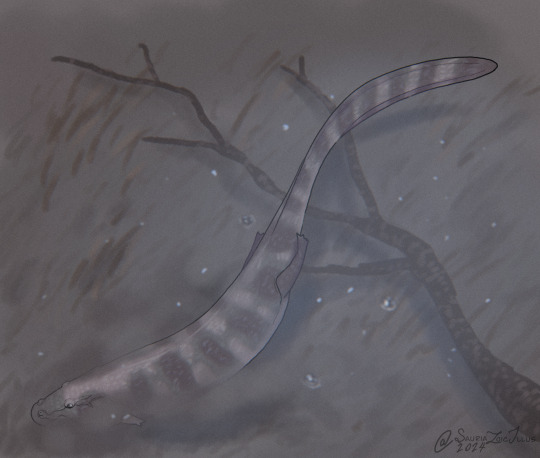
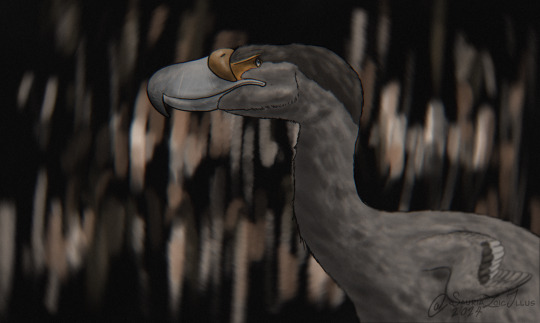
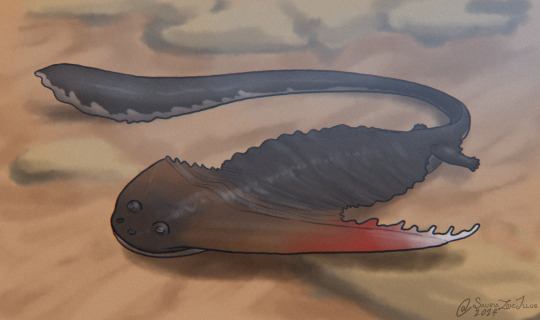
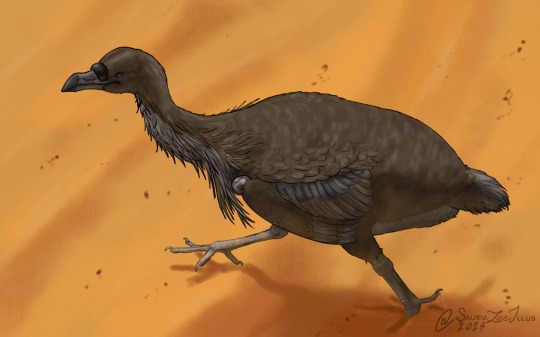
#Paleostream#paleoart#paleontology#digital art#artists on tumblr#digital artwork#palaeoart#digital illustration#sciart#id in alt text#paleoblr#palaeoblr#dinosaur#bird#bird art#birds#extinct birds#amphibians#terror bird#Crassigyrinus#Kelenken#Diplocaulus#Diplocaulus minimus#Pezophaps solitaria#Rodrigues solitare#pigeon
293 notes
·
View notes
Text
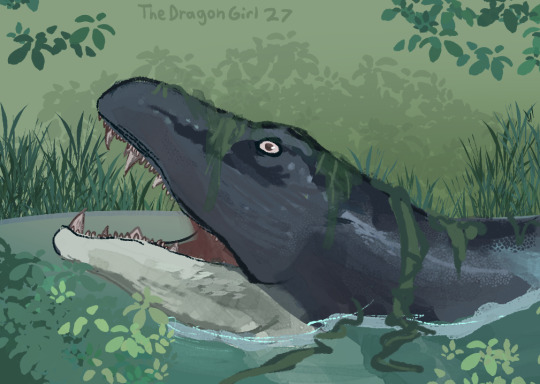
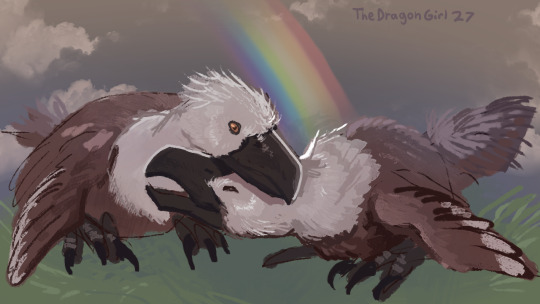
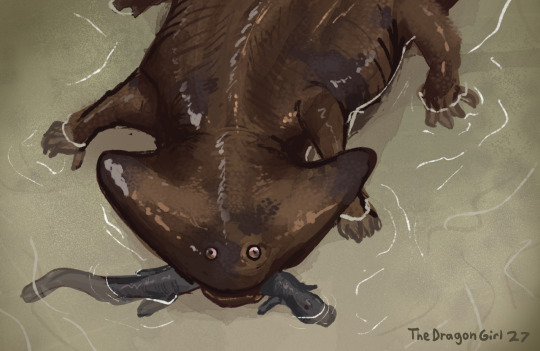
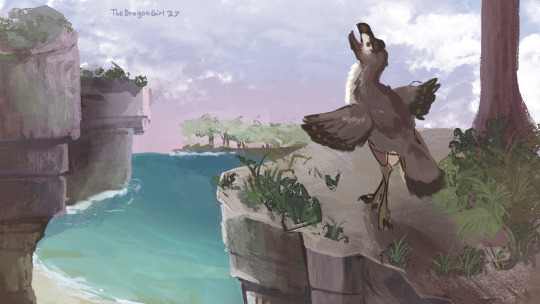
Flocking drawings!
Crassigyrinus surfacing for air showing off its weird ass teeth
two female Kelenken nuzzling under a rainbow
Diplocaulus catching its prey
one of the last Rodrigues Solitaire crying out trying to find a companion to no response
#paleoart#paleostream#Crassigyrinus#Kelenken#terror bird#birds#Diplocaulus#amphibian#Rodrigues Solitaire#Pezophaps solitaria#i see both names floating around so ill just tag as both#dragon draws creatures#yes the terror birds are lesbians pride month woooo#i actually got the idea cuz while googling ideas for the drawing i saw the wikipedia page for the formation its from has a rainbow on it#also the last one is sad because i get sad everytime an animal going exctinct is all humans fault#im really happy with these drawings i did good this week minus the first one but thats just a warmup (copium)
349 notes
·
View notes
Photo
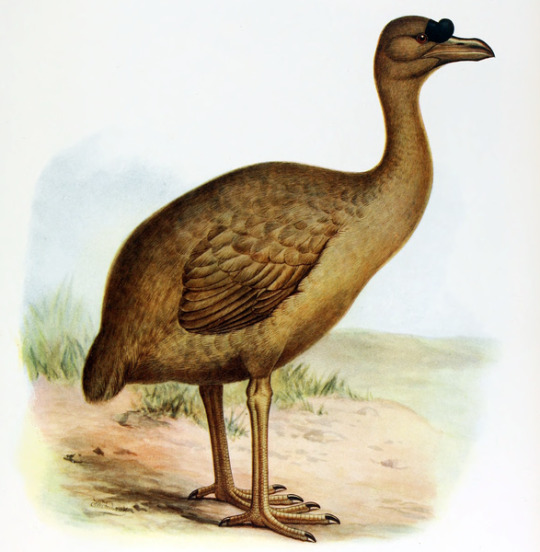
A new variant has been added!
Rodrigues Solitaire (Pezophaps solitaria) © Frederick William Frohawk
It hatches from extinct, and last eggs.
squawkoverflow - the ultimate bird collecting game 🥚 hatch ❤️ collect 🤝 connect
65 notes
·
View notes
Text




Results from the Flocking #Paleostream
Crassigyrinus, Kelenken, Diplocaulus and Pezophaps solitaria
783 notes
·
View notes
Text




Doodles from today's flocking paleostream featuring Crassigyrinus, Kelenken, Diplocaulus, and Pezophaps solitaria.
502 notes
·
View notes
Text




Flocking 5/31/24 -- Crassigyrinus + Kelenkelen + Diplocaulus + Pezophaps solitaria
#paleostream#paleoblr#paleoart#diplocaulus#kelenkelen#terror bird#rodrigues solitaire#crassigyrinus#whenever theropds get into paleostream im like thank god
265 notes
·
View notes
Photo

Come la storia ha trattato male il dodo
Storia e arte di Mikel Angelo Francisco
Quando si tratta di specie che sono state denigrate e maltrattate dalla storia, poche, se non nessuna, possono essere paragonate al dodo (Raphus cucullatus). L'ultimo avvistamento confermato di questo uccello risale al 1662—meno di 100 anni dopo che i marinai olandesi invasori avevano notato per la prima volta la sua esistenza sull'isola africana di Mauritius. Col tempo, l'uccello incapace di volare è diventato il simbolo sfortunato del fallimento evolutivo. La sua reputazione di essere terribilmente inadatto alla sopravvivenza ha cementato il suo posto nella cultura popolare e nel lessico del mondo anglofono come simbolo di obsolescenza ("morto come un dodo") e pura stupidità ("stupido come un dodo").
Per secoli, la narrazione dominante sul dodo era che fosse comicamente goffo, grasso, e inadatto a sopravvivere in un mondo dominato dagli umani. Supponendo che fosse così, la sua incapacità di volare lo rendeva una preda facile per i coloni europei, che lo portarono rapidamente all'estinzione.
Ma recenti studi suggeriscono che fosse agile e capace, muovendosi abilmente tra alberi e rocce con forti gambe. Aveva un buon senso dell'olfatto e potrebbe essere stato intelligente quanto un piccione. La stupidità non ha condannato il dodo; gli umani sì. Fu la caccia, insieme all'introduzione di specie invasive come i ratti, i gatti e i maiali che rovinò il suo habitat e distrusse il suo cibo.
Questo solleva la domanda: come abbiamo fatto a sbagliare così tanto sul povero dodo?
Dopotutto, questa specie non è come i dinosauri non aviari, scomparsi milioni di anni fa, di cui non abbiamo mai visto uno dal vivo nel contesto geologico. Di fatto, il dodo è uno degli esempi più celebri di una specie la cui scomparsa si è svolta sotto i nostri occhi. Sicuramente, qualcuno con un pennino e un pezzo di carta avrebbe potuto registrare come apparisse e si comportasse un dodo vivo, giusto?
La risposta, ovviamente, è no. Sfortunatamente, l'accuratezza delle loro rappresentazioni lasciava molto a desiderare, per usare un eufemismo.
Curiosamente, Carl Linnaeus stesso propose un nome binomiale per il dodo: Didus ineptus ("dodo stupido"), che risultava terribilmente adatto.
Inoltre, vale la pena notare che quando il dodo scomparve, non avevamo ancora standardizzato come categorizzare gli esseri viventi. Ciò significava anche che nessuno aveva lavorato con un esemplare tipico —un "punto di riferimento" accettato per descrivere i tratti fisici del dodo.
In aggiunta, il dodo morì durante un periodo anomalo nella storia scientifica: non solo la tassonomia moderna non esisteva ancora, ma anche la nostra comprensione dell'estinzione—di come l'intera popolazione di una specie potesse cessare di esistere—era ancora un concetto nuovo.
A un certo punto, le persone dubitarono persino dell'esistenza reale del dodo, e questo divenne associato a creature mitologiche come il grifone e la fenice dell'antichità mitologica.
Con tutte queste considerazioni, un team di ricercatori britannici ha affrontato il compito (anche se inevitabile) di districare i nodi della nomenclatura del dodo. Questo processo ha comportato l'esame di circa 400 anni di letteratura, nonché di documenti sul dodo. Pubblicarono il loro studio nello Zoological Journal of the Linnean Society.
Nel loro articolo, confermarono che il dodo e il suo più stretto parente estinto, il solitario di Rodrigues (Pezophaps solitaria), appartenevano alla stessa famiglia dei piccioni e delle colombe (Columbidae).
Non è solo una questione di pedanteria scientifica: studiare la storia del dodo può chiarire il suo ruolo nell'ecosistema di Mauritius, il che fornisce informazioni utili per la conservazione degli habitat e delle specie.
Questo può salvare altre specie dall'estinguersi come il... tu sai. (Ancora deluso.)
(via Il Dodo non era così stupido come pensavamo)
2 notes
·
View notes
Text
!!!ROUND!!! 1!!!! POLL!!!! 104!!!


[ID: two artworks of pigeons, the first, black and white drawing, of the Rodrigues solitaire, with a long neck, and wide eyes, standing in front of some fruit trees. the second, a painting of the Dodo, with a large brown body and beak, and a black head, standing in grass.]
I genuinely don't know who I want to win in this one. so many hard choices right from the start!
the Rodrigues solitaire sure looks like a silly guy! but will Dodo's fame and charisma secure it a place in the next round? time to find out!
9 notes
·
View notes
Text

Rodrigues Solitaire Pezophaps solitaria
† middle of the 18the century
#traditonal art#copic markers#bird art#extinct#rodrigues solitaire#Pezophaps solitaria#Birds Don't Know
142 notes
·
View notes
Photo

Island Weirdness #28 -- The Rodrigues Solitaire
Located to the east of Mauritius, the small island of Rodrigues is the geologically youngest of the Mascarenes, formed only about 1.5-2 million years ago.
And it also had its own large flightless bird -- the Rodrigues solitaire, Pezophaps solitaria.
It was closely related to the dodo, although it wasn’t a direct descendant. Based on DNA studies their last common ancestor is estimated to have lived about 20 million years ago, so they must have each convergently evolved from separate pigeon lineages that arrived on each island at different times.
Standing 70-90cm tall (2′4″-2′11″), with males being larger than females, it had long legs, a long neck, and a slightly hooked beak with a black band described as resembling a widow’s peak. Its plumage was grey and brown, and it was reportedly aggressively territorial and capable of giving a strong bite.
It had large lumpy bony knobs on its wrist bones that were used as weapons to clobber each other while fighting. Due to this its wings were less reduced than the dodo, retaining stronger musculature, and it was apparently also capable of using them to create loud low-frequency sounds for communication -- possibly in a similar manner to modern crested pigeons’ whistling wings.
The solitaire survived for longer than both its dodo cousin and the Réunion ibis, but only because its island was rarely visited by humans until the late 1600s. Once Rodrigues began to be exploited the story became the same as the other Mascarene islands: a combination of hunting, habitat destruction, and predation by invasive species rapidly dwindled its population. It likely went extinct sometime between the 1730s and 1750s, since an exhaustive search for a live specimen in 1755 failed to find a single bird.

#island weirdness 2019#science illustration#paleontology#paleoart#palaeoblr#rodrigues solitaire#pezophaps solitaria#raphinae#columbidae#pigeon#columbiformes#bird#dinosaur#art#rodrigues#holocene extinction#mascarene islands#island weirdness part 1
188 notes
·
View notes
Text

Pezophaps solitaria
Дронт-самітник, дронт родригеський (Pezophaps solitaria) — вимерлий нелітаючий птах родини голубових, ендемік острова Родригес, що знаходиться на схід від Мадагаскару в Індійському океані. Генетично, крім голубів і горлиць, його найближчим родичем також був вимерлий маврикійський дронт (Raphus cucullatus, обидва види утворили підродину дронтових). Голуб нікобарський (Caloenas nicobarica) — найближчий на сьогодні існуючий родич родригеського і маврикійського…
Повний текст на сайті "Вимерлий світ":
https://extinctworld.in.ua/pezophaps-solitaria/
#pezophaps#holocene#paleoart#paleontology#палеоарт#палеонтологія#extinct animals#вимерлі тварини#prehistoric#доісторичні істоти#madagascar#rodriguez#made in ukraine#ukraine#ukraineposts
12 notes
·
View notes
Photo


Chim cưu hay chim dodo (tên khoa học: Raphus cucullatus) hay là một loài chim không biết bay đặc hữu của đảo Mauritius (Mô-ri-xơ) ở phía đông Madagascar, Ấn Độ Dương. Dodo cùng với họ hàng gần nhất của chúng là loài Pezophaps solitaria tạo nên phân họ Raphinae của họ Columbidae (bồ câu) và cả hai đều đã tuyệt chủng. Loài có quan hệ gần nhất với dodo còn tồn tại là bồ câu Nicobar. Con người đã từng nghĩ rằng dodo trắng có mặt trên hòn đảo Réunion gần đó, vấn đề này hiện là không rõ ràng liên quan tới loài Threskiornis solitarius (cò quăm Réunion) và những bức họa về dodo trắng. Các vết tích bán hóa thạch còn lại chỉ ra dodo cao tầm 1 m (3 ft 3 in) và cân nặng có thể từ 10,6 đến 21,1 kg (23 – 47 lb). Con người chỉ biết tới diện mạo thực của dodo qua tranh vẽ và những mô tả trên giấy ở thế kỷ 17. Tuy nhiên, dáng vẻ chính xác ngoài đời của chúng vẫn còn là vấn đề nhập nhằng bởi những mô tả là thiếu đồng nhất và chỉ có một số ít trong đó là vẽ từ mẫu vật sống. Tương tự, con người không biết nhiều điều chắc chắn về môi trường sống và hành vi của dodo. Chúng được mô tả là có bộ lông màu xám-hơi nâu với một túm lông ở đuôi, chân màu vàng, đầu xám, trụi, mỏ xanh, vàng, đen. Chúng sử dụng gastrolith (những viên đá trong mề, hay dạ dày) để giúp tiêu hóa thức ăn mà thành phần được cho là có trái cây. Môi trường sống chủ yếu của dodo được tin là rừng ở vùng ven biển Mauritius. Một nguồn tin cho rằng chúng chỉ đẻ một trứng. Việc dodo trở nên không biết bay được cho là do nguồn thức ăn dồi dào sẵn có và sự thiếu vắng tương đối động vật săn mồi trên đảo Mauritius.
0 notes
Text
Drought And Humans Drove The Elephant Bird And The Dodo Extinct
https://sciencespies.com/news/drought-and-humans-drove-the-elephant-bird-and-the-dodo-extinct/
Drought And Humans Drove The Elephant Bird And The Dodo Extinct


A collection of giant elephant bird eggs.
D.Bressan
Madagascar is a large island but relatively isolated, sitting about 260 miles off the southeastern coast of Africa. Thanks to its inaccessibility, it was long thought that Madagascar was discovered late by humans, providing a “lost world” for a unique endemic megafauna, like giant lemurs, a dwarf hippo, a giant tortoise and world’s largest bird, the elephant bird Aepyornis maximus. Dated fossils show that most of Madagascar’s megafauna became extinct less than 1500 years ago, and written records suggest that some species made it even into early modern times.
Scientists have long debated whether humans or climate change were to blame for their extinction. Now cave deposits may provide a possible answer, showing that unusually dry conditions coincided with a growing human population on the island, putting the isolated ecosystem under a lot of stress.
In 2008, rumors of the discovery of dinosaur bones led anthropologist Patricia Wright to Ilakaka, in the south-central part of the island. The supposed dinosaur bones, discovered by chance during the search for sapphires, actually were bones of giant lemurs, hippos, giant tortoises, crocodiles, and elephant birds. When the bones were examined in 2016, zoologists made an important discovery. Some of the 10,500-year-old bones showed grooves made by stone tools. This discovery suggests that humans arrived more than 8000 years earlier than previously thought and people and giant animals coexisted for millenia on the island. It seems that humans, at first, did not impact the environment in negative ways.
Recommended For You
A research team reconstructed the climate of the entire region studying speleothems found in caves of Madagascar and Rodrigues – a small, remote island 1000 miles east of Madagascar. The island was colonized only 1000 to 500 years ago. That made it the perfect place to analyze speleothems, mineral deposits formed in a cave that can serve as a record of ancient environments and climates. Analyzing the concentration of oxygen, carbon, and trace elements in the single layers of the speleothems, the researchers reconstructed the variability of temperature and precipitation of the islands of Madagascar, Rodrigues and Mauritius in the last 8000 years.
The study suggests that the southwestern Indian Ocean underwent three major droughts around 4500 years ago, and an extreme dry period coinciding with the mass extinction on Madagascar 1500 years ago. A peak of grass pollen preserved in swamps throughout the island shows that pastures and farmland replaced the native forests more than 1000 years ago, suggesting also a significant growth of the human population. Because Madagascar’s megafauna had survived the previous droughts, the researchers suggest that human activity, like hunting, farming and habitat destruction, played an additional role in the last one. Around 500 years ago, the first Europeans set foot on Madagascar.
Madagascar was not the only island in the Indian Ocean experiencing biodiversity loss. On the island of Mauritius, approximately 370 miles west of Rodrigues, the flightless bird Raphus cucullatus, popularly known as “Dodo” went extinct between the year 1600 to 1800. The permanent colonization of Rodrigues was marked by island-wide deforestation and the extinction of Dodo’s counterpart, the Rodrigues solitaire (Pezophaps solitaria).

Although it disappeared just four centuries ago, Dodo relicts are very rare. Just a few bones from … [+] living Dodos have been preserved and only one complete skeleton has ever been found. All the other Dodo fossils shown in Museums are composite skeletons made from different individuals, as is this case for this one, which is one of the most complete.
D.Bressan
#News
0 notes
Text
The Rodrigues solitaire (Pezophaps solitaria) was a flightless bird that was endemic to the Indian Ocean island of Rodrigues. With the extinct dodo of Mauritius, it formed a subfamily of the pigeons and doves. The male solitaire was much larger than the female and his plumage was a darker grey-brown. Both sexes had a black band at the base of the hooked beak and a long neck. They were territorial, using bony knobs on their wings in combat. The female laid a single egg that was incubated by both sexes. Their diet included fruits and seeds. The solitaire was first described in detail by François Leguat, the leader of French Huguenot refugees who were marooned on Rodrigues in 1691–1693, but little else was known about the bird until the first of thousands of subfossil bones were found in 1786. Hunted by humans and introduced animals, the solitaire was extinct by the late 18th century. A former constellation was named after it. (This article is part of a featured topic: Raphinae.)
0 notes
Link

The Wikipedia article of the day for October 28, 2019 is Rodrigues solitaire. The Rodrigues solitaire (Pezophaps solitaria) was a flightless bird that was endemic to the Indian Ocean island of Rodrigues. With the extinct dodo of Mauritius, it formed a subfamily of the pigeons and doves. The male solitaire was much larger than the female and his plumage was a darker grey-brown. Both sexes had a black band at the base of the hooked beak and a long neck. They were territorial, using bony knobs on their wings in combat. The female laid a single egg that was incubated by both sexes. Their diet included fruits and seeds. The solitaire was first described in detail by François Leguat, the leader of French Huguenot refugees who were marooned on Rodrigues in 1691–1693, but little else was known about the bird until the first of thousands of subfossil bones were found in 1786. Hunted by humans and introduced animals, the solitaire was extinct by the late 18th century. A former constellation was named after it. (This article is part of a featured topic: Raphinae.)
0 notes